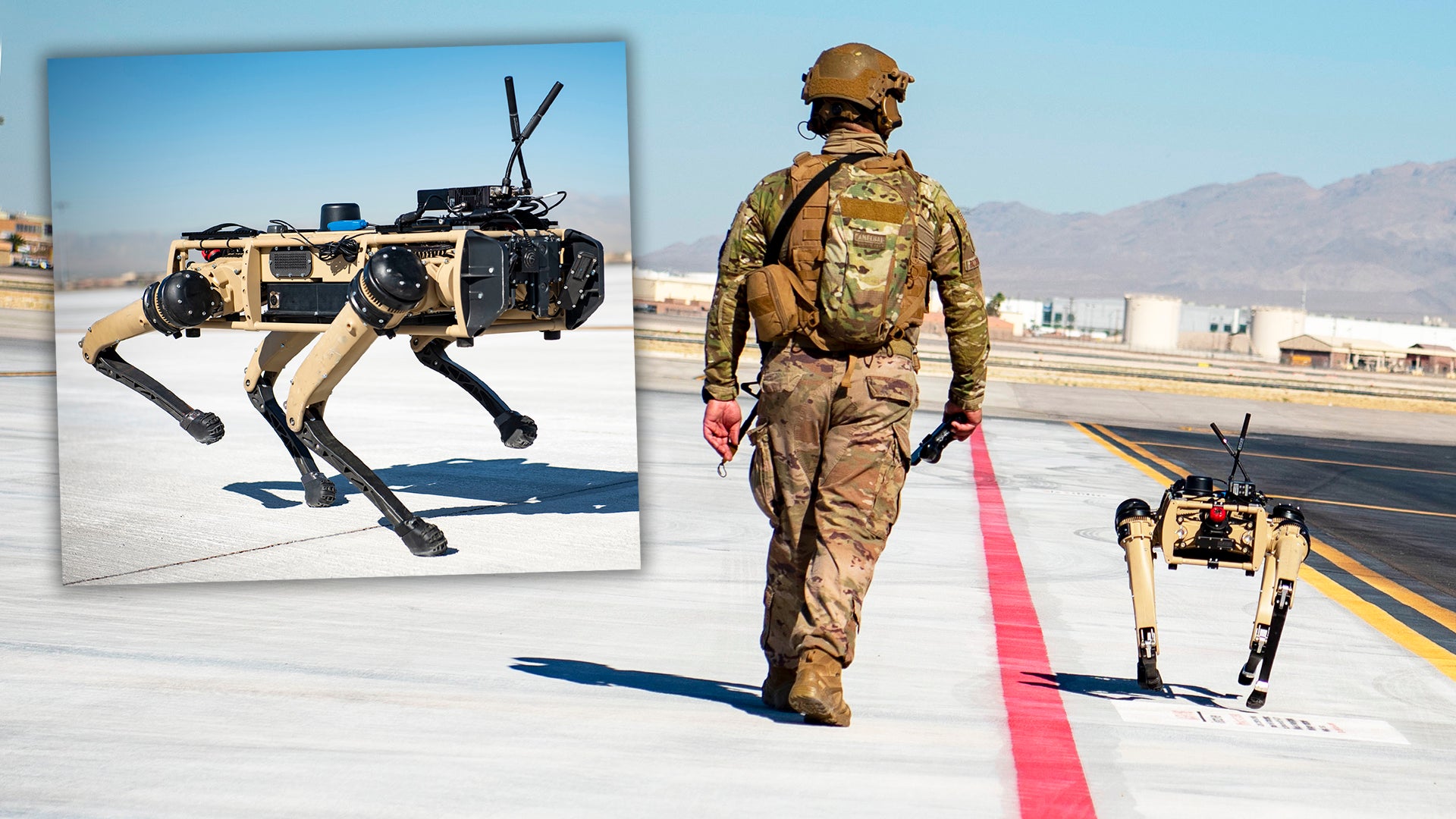Semi-autonomous quadrupedal unmanned ground vehicles, or Q-UGV, made by Ghost Robotics, more popularly referred to as “robot dogs,” have been making appearances in USAF exercises throughout 2020. Now, the 325th Security Forces Squadron at Tyndall Air Force Base in Florida has been named as the first unit within the Department of Defense to adopt the robotic quadrupeds for regular operations.
While the idea of robotic dogs patrolling a major Air Force installation seems like a science fiction dream come true, it hasn’t been exactly clear how these mechanized hounds would be put to use. To help us understand their real capabilities and why the U.S. military is interested in them, The War Zone spoke with Jiren Parikh, CEO and founder of Ghost Robotics, the robots’ designer and manufacturer.
Here is what we found out.
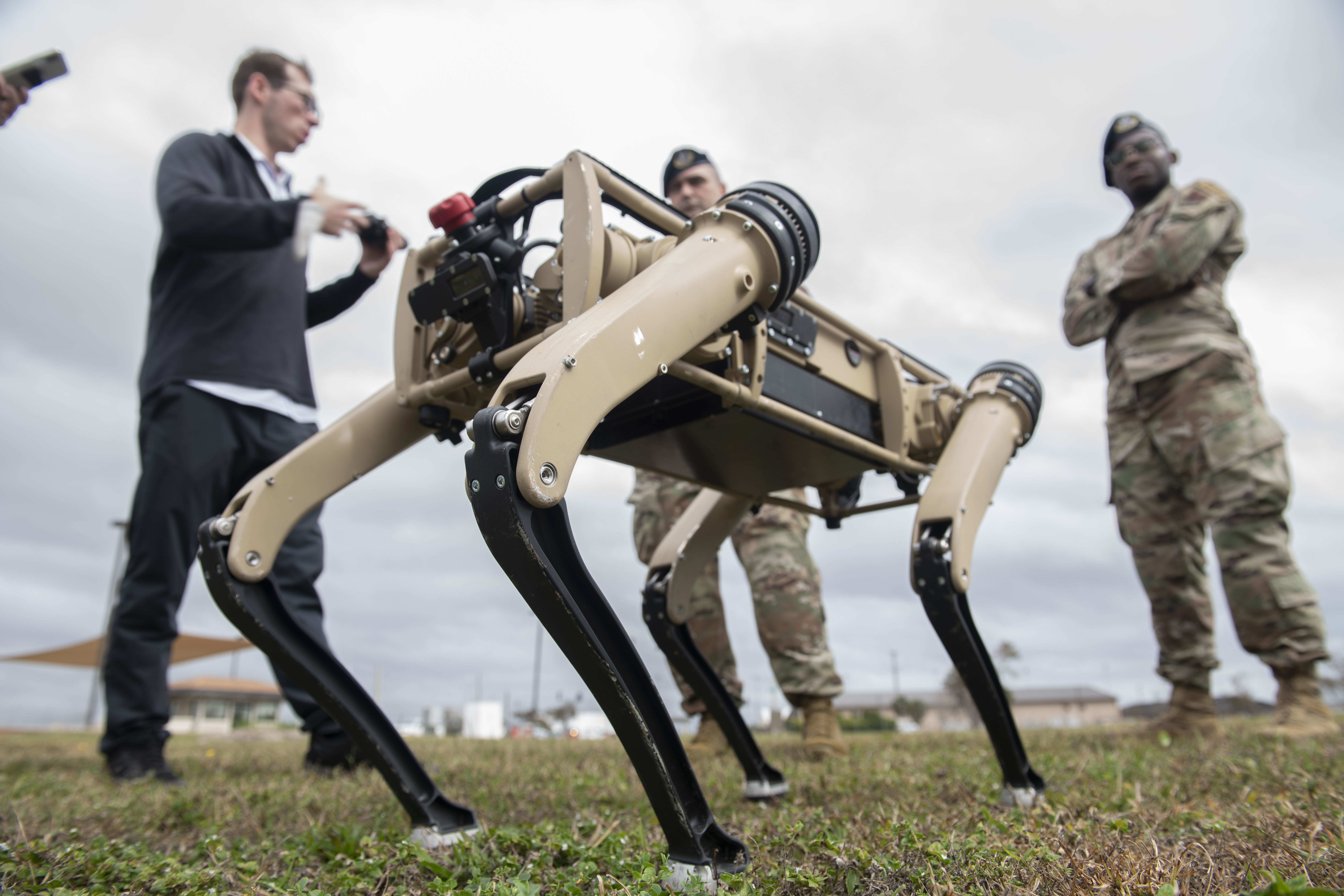
The USAF And Man’s Next Best Friend
In a USAF press release last month announcing Tyndall’s acquisition of the Ghost Robotics Q-UGVs, Air Force Major Jordan Criss, the 325th Security Forces Squadron’s commander, said that the robot dogs would patrol a predetermined path and would be monitored by a non-commissioned officer throughout their patrol. “These dogs will be an extra set of eyes and ears while computing large amounts of data at strategic locations throughout Tyndall Air Force Base,” Criss said. “They will be a huge enhancement for our defenders and allow flexibility in the posting and response of our personnel.”
Criss added that the dogs would be able to patrol areas that “aren’t desirable for human beings and vehicles” and would even be able to be operated by personnel wearing virtual-reality headsets. “We will be able to see exactly what the robot dog is detecting through its mobile camera and sensor platform [and] if desired, we will also be able to issue verbal commands to a person or people through a radio attached to the dogs.”
The often moist, swampy, coastal environment at Tyndall won’t stop the Ghost Robotics’ robots as they feature an IP68 rating, meaning they can be submerged in water up to a maximum depth of 1.5 meters, or just under five feet.
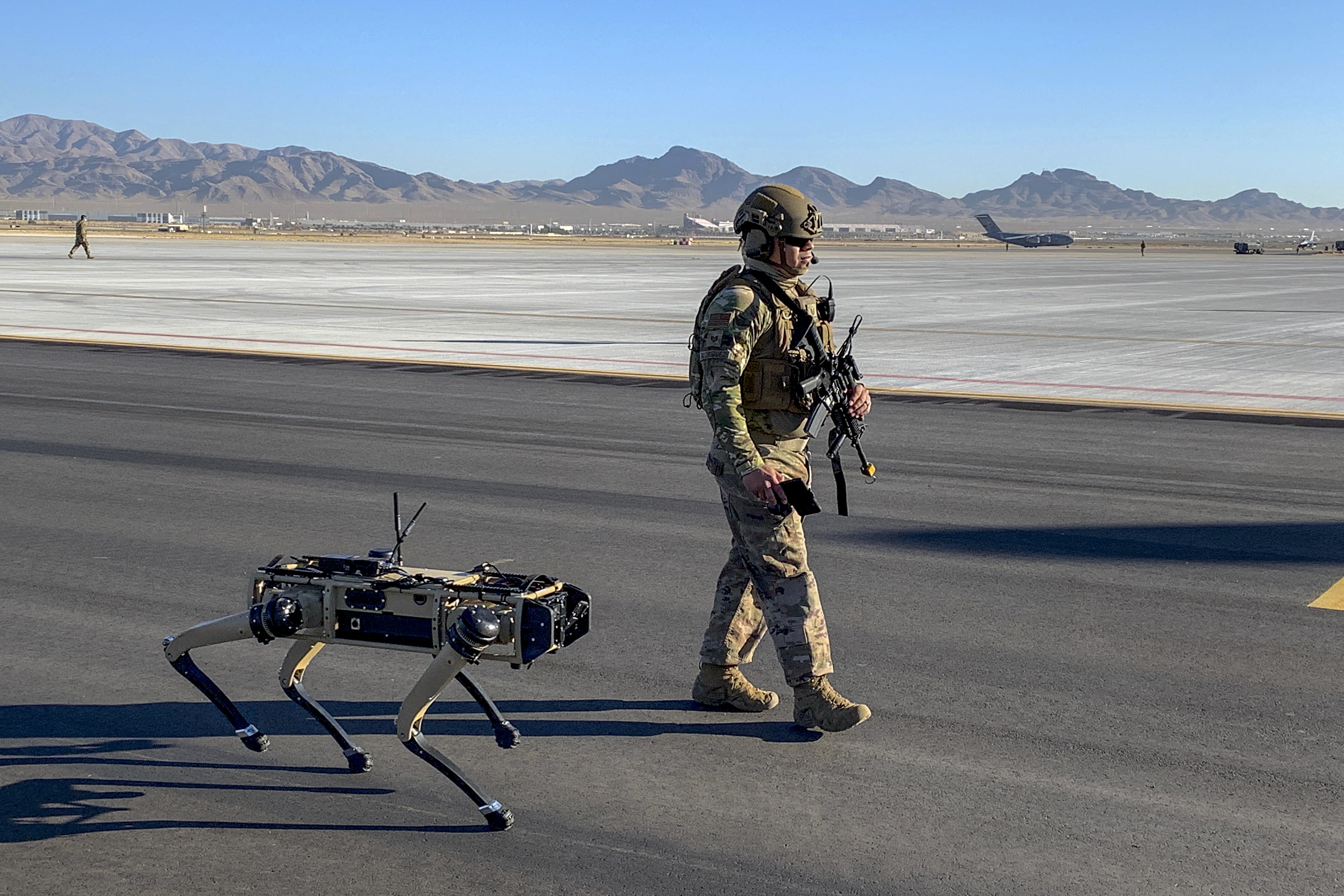
Tyndall sprawls along the Gulf of Mexico in the Florida panhandle in an area prone to hurricanes. The base was damaged heavily in 2018 when hurricane Michael ravaged the coastline, causing hundreds of millions of dollars in destruction to the base. The Air Force is also eyeing the dog-like robots for use in deployed and/or disaster-ravaged environments, making damaged Tyndall Air Force Base a perfect test environment for the robots, as well as an operational one.
Making Robots More Efficient Through Imitating Nature
Aside from patrolling the marshes around Tyndall, Ghost Robotics Q-UGVs are being eyed for a wide variety of roles both on and off the battlefield. Ghost Robotics CEO Jiren Parikh says their robots are incredibly versatile, owing to the stripped-down, nature-inspired approach the company often touts.
The engineers at the firm looked at what was already being developed in terms of quadrupedal robots and thought it was all wrong. Instead, Ghost Robotics tried to imitate dogs or other small mammals by enabling the robot to “feel” the terrain underfoot rather than relying on sensors alone. “We want our robots to feel the environment, transfer it through the motors into our computer platform, and quickly adjust,” Parikh says.
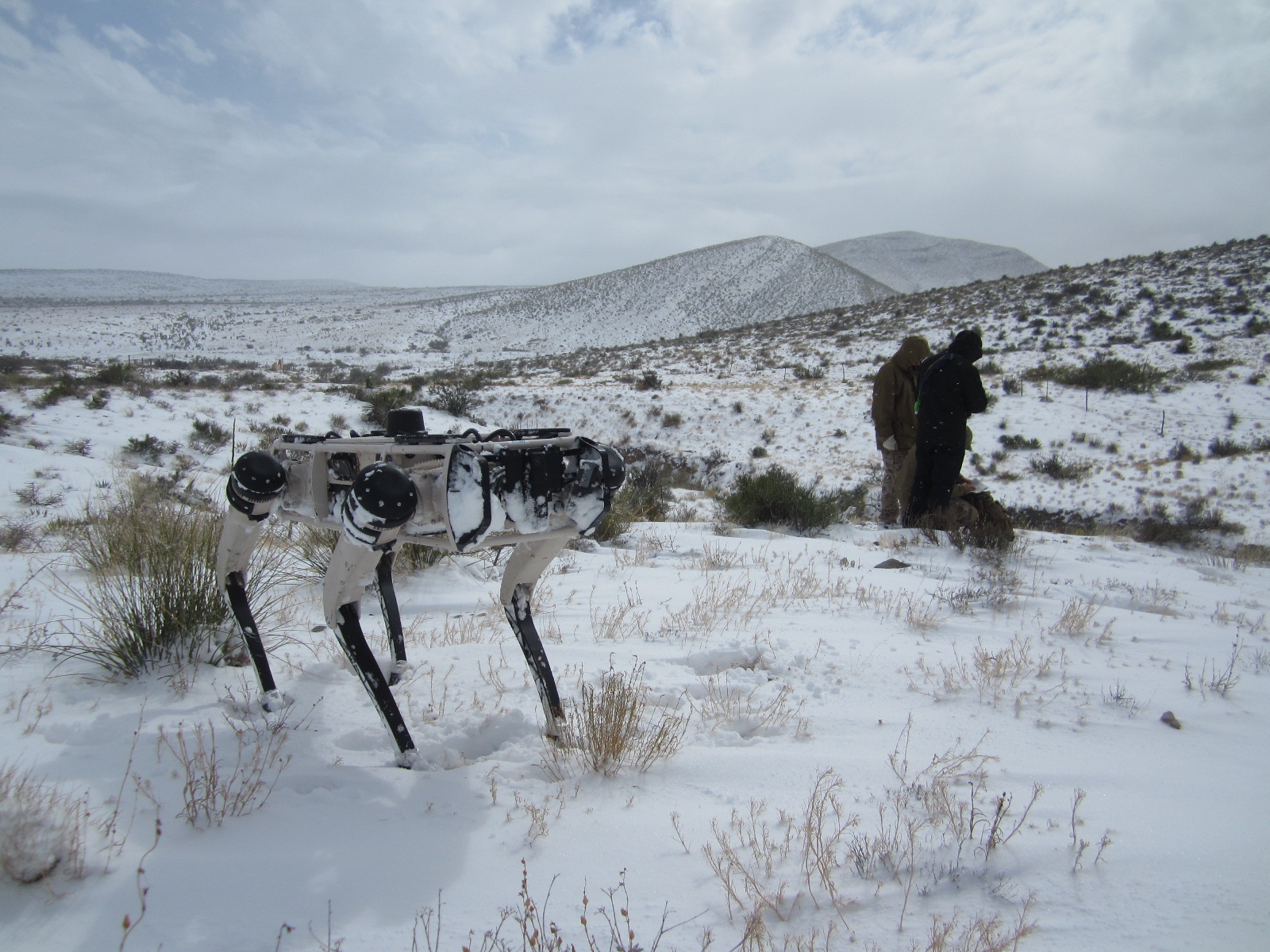
Parikh says their robots “actually feel by minute forces that are generated through current changes in the motors.” This active feedback makes it so that no matter what the environment, the robots will be able to intuitively respond to what’s around them, as the Ghost Robotics CEO and founder further explains:
When our robots move around and you shove them, these forces are computed at 2,000 calculations per second per leg. We’re adjusting it to make it like a mammal. Our robot, when you see it climbing stairs or walking or running around, we turn off all the sensors. It’s just feeling. It’s completely blind. The reason we do that is because if a warfighter or a mining company, if anybody is using our robot, this robot had better operate 99.99% of the time.
It’s like every other machine, every motorcycle, car – the drivetrain has to have some gear reduction. The minute you put gear reduction in, the only way the robot can ‘feel’ the terrain is through vision or putting sensors in the ‘toes.’ The thing is, those sensors aren’t fast enough… These quadrupeds only have three motors per leg, twelve motors in all. How do you move them over unstructured terrain elegantly when you know the force sensors are going to fail, they’re not perfect? Vision doesn’t always work. What do you do in a foot of snow or two feet of grass?
That’s not to say that Ghost Robotics’ robots do not have other sensors. The rather straightforward and stripped-down approach to the base design means that many sensors and attachment packages can be added to its frame, even sensors to aid in movement and environment awareness.
Still, if or when those sensors fail, the robot’s simple “reptilian brain” takes over. “If it fails, if the sensors go, if it doesn’t feel the environment or if it slips on ice or stairs, just like a mammal, it will adjust itself and stay stable,” Parikh says. “And, if it falls over, it will pick itself up and keep going. That is the premise of our robot design that is completely different from a Boston Dynamics or any other robot out there. We made it more like nature.”
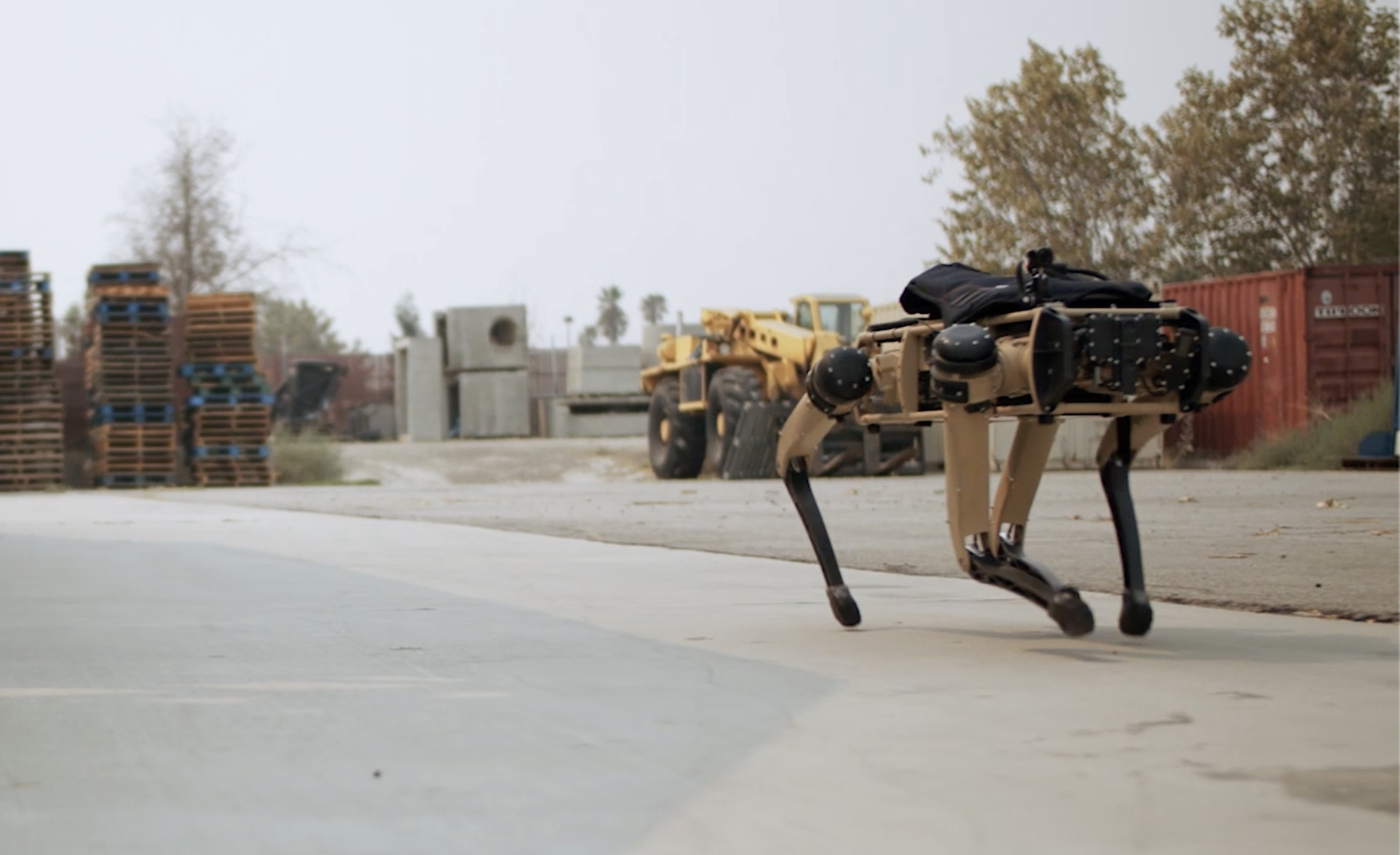
Ghost Robotics’ robots are algorithmically controlled from a single one-watt microprocessor that runs the whole machine. The entire robot runs on just ten watts of power, compared to a Boston Dynamics robot, whose processors eat up close to 140 watts. That means Ghost Robotics’ Q-UGVs are designed to operate for much longer than competitors’ robots.
Parikh says their robot dogs can travel up to six and a half miles on a single charge. The robots are currently powered by lithium-ion batteries, but Ghost Robotics is looking to fuel cell technology for future applications. The company even plans to build “dog houses” into which the robot dogs can enter and recharge wirelessly.
Parikh says his company has even considered use cases where one of their government customers might want a robot to walk across the bottom of a lake or other small body of water. “We could potentially use it to sit there, maybe move it, maybe blow something up, or sense something on a riverbed or shoreline. The robot can fill some bladders and get negative, neutral, or positive buoyancy. Battery life is a key issue. Eventually, we’re going to give it gait and motion so it can swim,” Parikh told The War Zone. “We’ve filed some patents. It’s pretty cool.”
Further Applications Of “Robotic Dogs”
As we’ve seen in previous tests at Nellis Air Force Base and Tyndall, Ghost Robotics’ Q-UGVs are being eyed by the USAF and other U.S. military partners for use in persistent, autonomous perimeter security. There are many situations in which ground platforms are better suited to these tasks than unmanned aircraft, but even pairing these Q-UGVs with UAVs can create a layered, cooperative, more redundant perimeter security architecture.
One can imagine a scenario where unmanned platforms, both overhead and on the ground, can work together to detect anomalies along a border and investigate those potential issues. This would drastically increase the coverage area of patrols, bolster the quality of information about potential issues, potentially keep human operators out of initial danger, and provide higher situational awareness to security personal once alerted to any breaches or anomalies.
By January 2021, Parikh says, Ghost Robotics Q-UGVs will be able to autonomously map and patrol operating bases. But patrolling installations is far from the only scenario that Ghost Robotics and the Department of Defense envision for the Q-UGVs.

Some of the payloads and applications that Ghost Robotics has envisioned include a wide variety of intelligence, surveillance, target acquisition, and reconnaissance (ISTAR) roles. Electro-optical, acoustic, and other various surveillance sensors can easily be attached to the robots’ frames, allowing them to be the eyes and ears of forces on the ground.
The robots can also serve as mobile mesh communications network nodes, kind of like a mobile, miniaturized cell tower that can be quickly deployed in situations where communications infrastructure is unavailable. The Ghost Robotics Q-UGVs have Wi-Fi and 4G antennas built-in off-the-shelf. “You could operate it with a cell phone 1,000 miles away,” Parikh says.
On the battlefield, these small Q-UGVs could be employed in heavy asset reconnaissance roles, meaning they could scout ahead of or follow alongside armored vehicles to scout for mines or IEDs, enemy forces, and other threats, as well as obstacles.
In a previous exercise in which the USAF tested its new Advanced Battle Management System (ABMS), a Ghost Robotics Q-UGVs provided targeting data to assets on the other side of the country. “Our robot was part of the kill chain and provided real-time strike targeting data to USAF operators. It was connected by a Silvus mesh radio to a network that had a battleship off the coast of Pensacola and a Starlink satellite connected to it,” Parikh told The War Zone. This data included real-time video feeds and geolocation data through the Android Team Awareness Kit, or ATAK, a mobile device-based situation awareness app used by military operators.
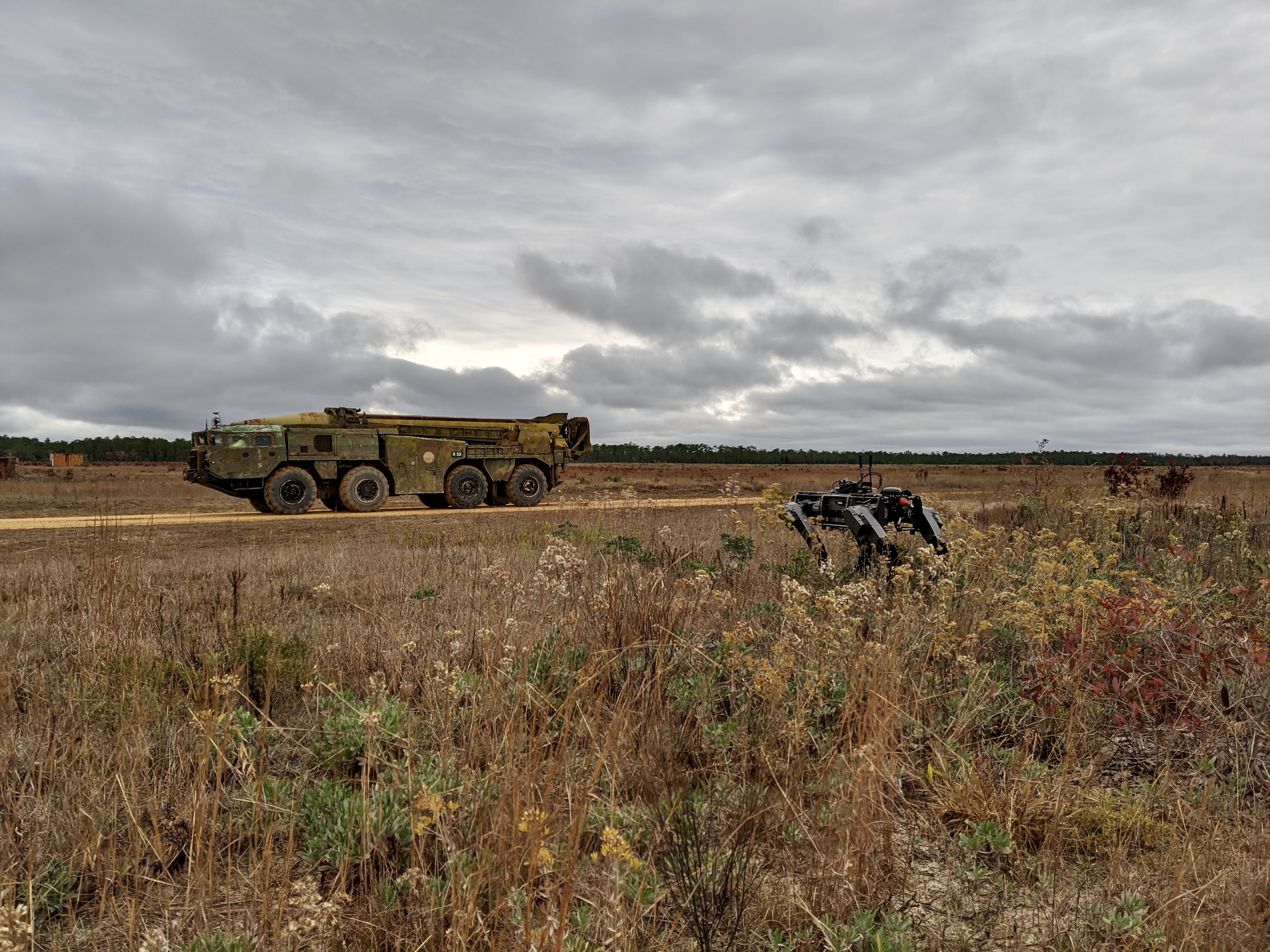
“I think this becomes exciting once we get the cost of these systems down to where you could drop hundreds onto a battlefield,” Parikh told us. “We could have this application ready by 2022.” Ghost Robotics has government customers already requesting smaller, more resilient models that could be dropped out of aircraft using parachutes or protective bubbles. Ghost Robotics is also looking to develop smaller, lighter models that are capable of scaling chain link fences or being carried by individual human operators until they are needed.
Ghost Robotics says explosive ordnance disposal (EOD) will be one of the most sought-after applications for their Q-UGVs. Ghost Robotics has already teamed with EOD technology manufacturer Zero Point to put disruptors on their robot dogs capable of disabling explosives. The robots’ manufacturer also envisions roles in chemical, biological, radiological, and nuclear (CBRN) detection, what the company calls a “no-brainer.” Robot dogs could be fitted with sensors able to detect dangerous materials and be sent into suspected CBRN storage sites, taking vulnerable human soldiers or public safety personnel out of the equation entirely.

For its next model, Ghost Robotics is aiming at a two-minute rule, meaning every module should be able to detach or attach in under two minutes. This rule, combined with their flexible, modular design, means Ghost Robotics wants its robots to fulfill a huge array of battlefield and support roles that may pop up. Any type of payload, including electronic warfare or electronic support measures, could be attached to one of the robot dogs. Of course, if an EOD disruptor can be attached to one of the robots, small firearms or munitions could hypothetically be as well.
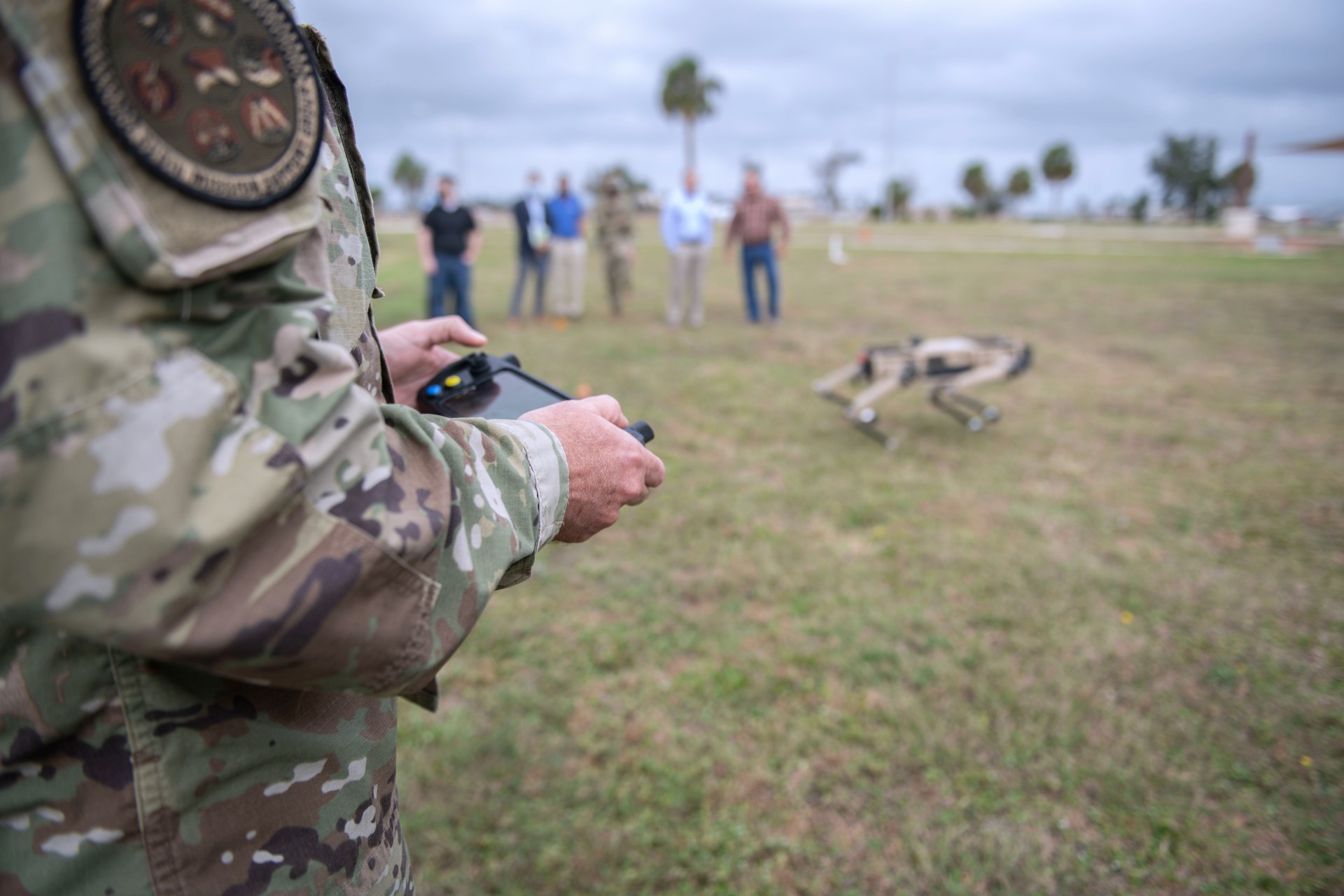
Various attachment systems, such as TSLOTS or Picatinny rails, can be built right onto the robots. Some models even feature USB ports. “You can plug in any radio, any sensor, any payload you want,” Parikh says. “You never have to come back to Ghost.”
Outside of defense applications, Ghost Robotics is marketing their robot dogs to public safety and emergency management agencies around the world for use in a broad range of applications. A Q-UGV could be sent into a burning building or into the rubble of a fallen structure to search for signs of life, leaving human or K-9 first responders out of harm’s way. In less dangerous scenarios, Ghost Robotics Q-UGVs could be employed in asset maintenance or inspection tasks for a huge range of transportation, infrastructure, or logistics tasks such as inspecting runways for foreign objects or surveying long stretches of rail lines.

Aside from its extensive list of partners within the defense, intelligence, and homeland security communities, Ghost Robotics is also looking to cater to applications within manufacturing, energy and natural resource management, construction, health care, logistics, and “last mile” delivery services.
Military Working Dog, Meet Your New Battle Buddy
Ghost Robotics is far from the first or only robotics firm that the Department of Defense has partnered with. Boston Dynamics is probably the best-known company in the world for its work in this particular space. We inquired as to how they see the competition in the realm of Q-UGVs, but we have yet to receive a response. Still, Ghost Robotics now holds the mantle as the company that provided the first ‘robo-dog’ for mainstream operational use to the Air Force, which is a huge accomplishment that will give them a leg up on the competition going forward.
Historically, the U.S. military has eyed unmanned ground vehicles and robots for ‘pack mule’ roles, although motor technology has for years made these applications impractical due to energy needs and weight constraints. As battery technologies and novel approaches to drivetrains, such as those used by Ghost Robotics, continue to improve, it won’t be too long before warfighters are joined in battle by unmanned ground vehicles of all types. Still, the adaptation of the working dog concept from flesh to mechanized form is maybe the most intriguing.
While there is no sign that combat K-9s will be retired for their mechanical counterparts anytime in the foreseeable future, one can imagine a reality in the very near term where military working dogs will operate right alongside their robotic cousins.
Contact the author: Brett@TheDrive.com
